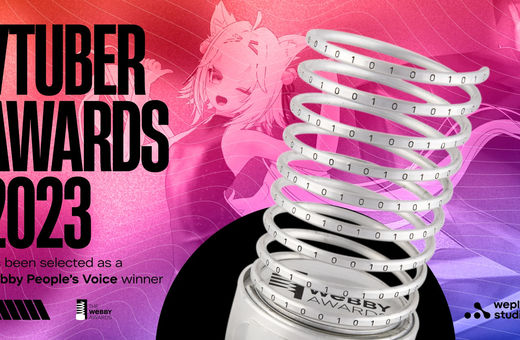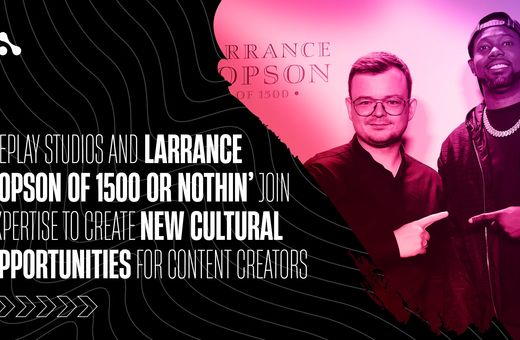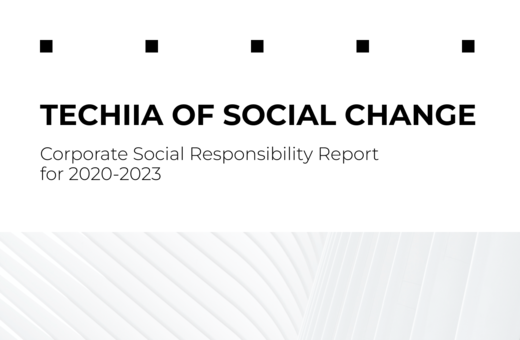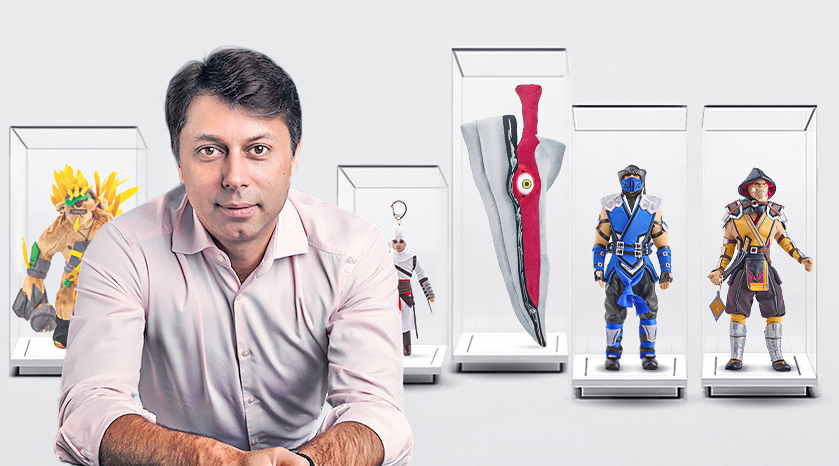
One might wonder, what is interesting and technological about it though? But the fact is that these are not teddy bears and plush cats, but licensed characters and items from famous computer games. You can find Dota 2, World of Tanks, and Mortal Kombat collections here. But how did the Ukrainian company manage to reach the world's largest publishers of computer games and obtain a license to release these products? More on this, and on how the process of creating a character or a ferocious game weapon from fabrics, we talked with Yuri Antoshkin, the Managing Partner of FS Holding and WP Merchandise!, who also holds the position of Representative Director of TECHIIA holding.
How did the idea to release plush merch come about? What came first, a plant or an idea?
In the beginning, there was a word and the word was: "How about I sew you a plush "courier" from Dota 2, people will be happy to receive such a bonus!". So said Valeria Vykhristyuk, the wife of one of our directors, a fashion designer by training. It was in 2012 right before the WePlay Esports Dota 2 tournament. No sooner said than done. The toy came out aesthetically pleasing and of high quality, we distributed it along with the invitations, and also offered it for purchase to everyone, consequently increasing sales.
At the next tournament, we did it again. We had great feedback from the participants in regards to such souvenirs again. Vendors also noticed these toys, and noted the quality. They offered us to pay royalties and make full money on merchandise.
We thought that we would quickly assemble R&D, choose a contractor factory and lift off.
But the reality turned out to be different.
We visited several dozen factories in Ukraine and abroad, but no one was able to take our order.
Our products were too complex for their procedure and equipment. For example, in an ordinary stuffed dog, which can be found in any toy store, there are 12 parts on average. Our toy with the same size has from 50 to 90. The smallest detail in our 15 cm figure is 5x2 mm. This is despite the fact that the equipment that was offered to us at the exhibitions cuts the fabric with a tolerance of 1.5 cm.
So the production had to be created with our own hands. We created the WP Merchandise! company after several iterations, built a factory in Kyiv in the Pochaina metro area. Now 6 designers, 30 seamstresses, 20 decorators, 6 cutters, and dozens of other specialists are working on products.
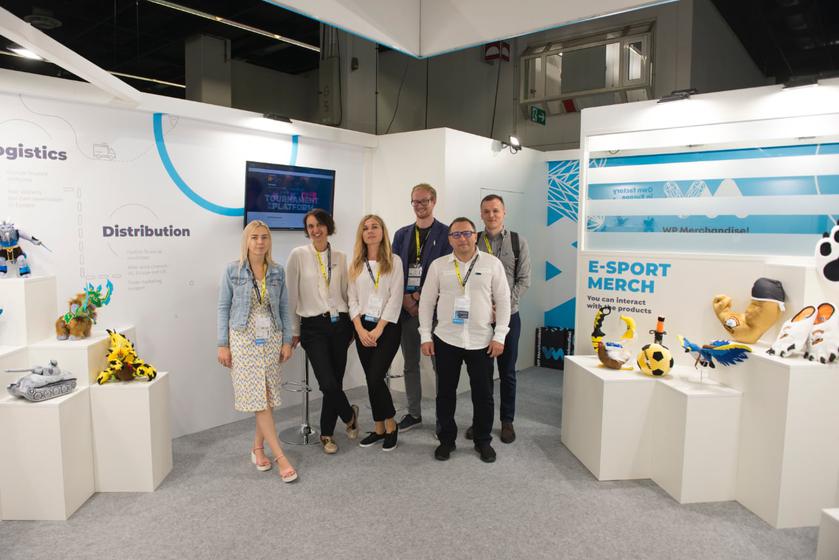
WP Merchandise! team demonstrate several collections of merch at Gamescom in Cologne, 2019
How difficult was it to reach out to copyright holders and persuade them to release products? What questions did they ask? What arguments did convince them? Can someone else do the same thing right now, or is your situation unique (if so, in what way)?
Our situation, of course, is not unique, but not everyone can get the right to manufacture licensed products. This is due to the requirements of the copyright holder:
- a strong reputation of a potential partner,
- the presence of production facilities and well-known partners in the distribution network,
- the ability to provide a full cycle of the product’s life: packaging, logistics, service, insurance, promotion.
Some fly-by-night firms will not be able to sign a contract. You need at least 5 years of sustainable work.
It took us a very long time to get the first license. With no experience in licensed products, it was difficult to gain trust. A ready-made prototype of the collection was of great help for us during the first negotiations with well-known licensors. By that time we had already studied the desire and needs of the game community, created toys based on the most popular characters made sure that they can be produced in large quantities, and only then, having produced several master models, we came to a meeting with the copyright holders. The second and third licenses were obtained faster, but not much - it took up to a year for each case. Now everything is easier, these are just ordinary negotiations. We are already working with Ubisoft, Valve, Warner Bros., Bandai Namco, Wargaming.
What are the main stages of the figure licensing process? How long do they take? How many months pass from idea to delivery of the first batch?
Negotiating and agreeing on clauses of a contract is one of the most time-consuming processes. Before signing a contract, we make market research, whether the game is popular in the countries provided, the cinematic universe or the franchise, who will be our competitor, whether we can be competitive in this territory and recoup the payment of royalties to which we subscribe. Licensors are looking into how reliable we are and whether our product is worth their license.
In the main contract, the type of toy, materials, dimensions, cost, territories in which we can sell, and on what conditions are stated. The Legal Line and the license for which we sign a contract are also fixed there. It contains both commercial and legal aspects. Additionally, there are recommendations that determine what kind of packaging should be, how and where to place a logo, hologram, and other information.
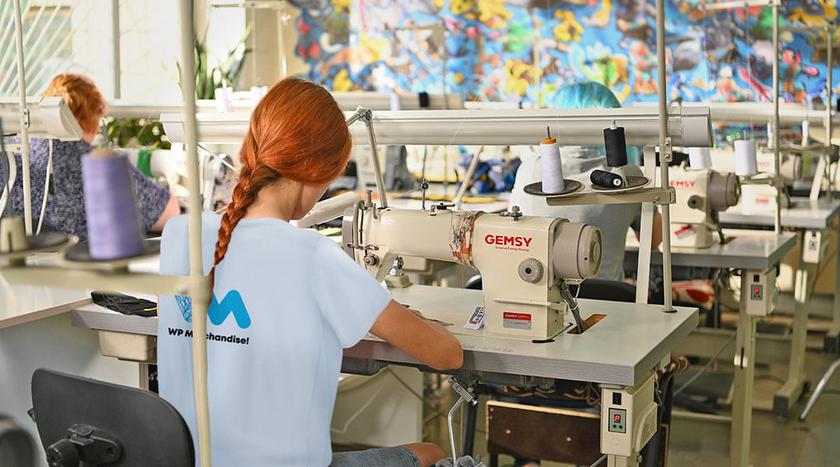
30 seamstresses are working on products at the WP Merchandise! Factory in Kyiv.
The first stage is to agree on the conditions by which the product and commercial categories are determined. The result is the signing of the contract. The term is from 1 to 3 months.
The second stage is to create the Golden Sample and approve it right after the contract is signed. The Golden Sample is the final model of the toy, which will enter the market. The term is from 2 to 6 months.
The third stage is the production itself. According to the approved template, a specified number of units is created, which is then distributed to our stores and partner’s stores. The term is from 1 to 6 months.
On average, we go through the entire cycle from the first sketches to the finished and packed toy in six months.
How do you choose characters, their poses, and accessories in their hands? Who makes the decision? Tell us about the process.
We are demand-driven. We read reviews, subject-specific forums, and chats, listen to fans, wonder which characters they liked more, what characters they, perhaps, associate themselves with, which of them would they gladly take home.
We create polls about which characters would the fans be interested to see in plush.
This was the case, for example, with the characters of the Dota 2 limited series. To create a product first, and then aggressively advertise it is not our approach at all.
With the next step, we take the game guides and character guides from the licensor. In these guides, as a rule, is everything about the appearance, accessories, and vestments. Many of our toys hold something in their hands, have some specific details in their clothing or appearance. Recognition is conveyed precisely through such details: the scar on the lip of the assassin Altair, the Riki swords from Dota 2, the patterns on the Sub-Zero suit. Our artists draw a sketch based on the guides. Designers and technologists immediately figure out how to properly recreate it in plush, make initial edits. Next, we agree on the sketch with the licensor. Sometimes, the licensor can add some details to enhance the similarity with the on-screen character.
Based on the agreed sketch, a digital model of the toy is made.
Typically, about 8-9 iterations of the prototype are enough for us.
After that, the technological department starts its work, adapts the prototype for the production of future batches. Based on the finished prototype, 2 master models are sewn: one remains in the R&D department, the other is sent to the copyright holder. Even at this stage, the licensor may come up with some edits. We refine the master model to perfection, sometimes even the entire process has to be redone.
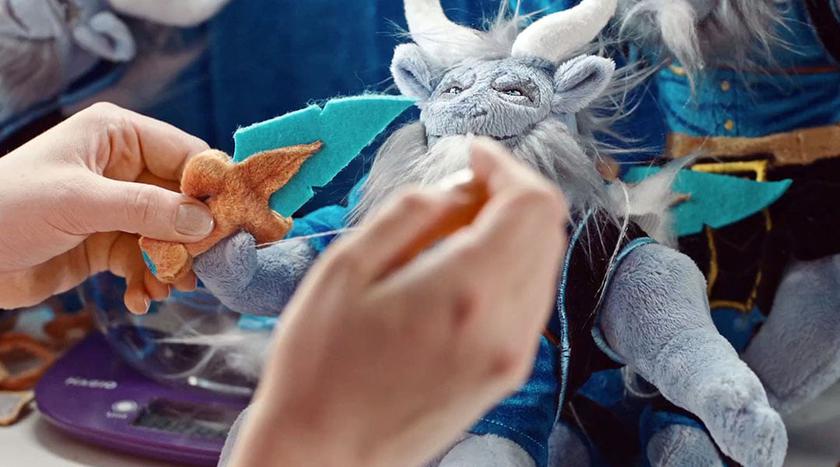
Just a few last stitches and Ricky from Dota 2 is ready to be showcased in the store. It just needs to be put in the original packaging.
How do you decide what should be the figure’s size and its level of detail? Is the price being formed after the toy is out or, on the contrary, the toy should fit into the price given?
The plush character should match the game or movie image as close as possible. Therefore, the level of detail directly depends on its appearance when the toy is out. The size and details are negotiated at the stage of signing the contract. They also depend on the characteristics laid down by the scriptwriters of the franchise.
The price cannot be projected to fit the toy, it is being formed after the toy is ready.
Of course, the cost is influenced by what kind of constructive simplifications or complications we make.
What is the structure of the figure's price (at least in general terms)? What does it include?
In general terms, these are:
- the work of the R&D department
- materials
- production
- packaging
- certification
- logistics
- distribution
- lawyers’ and managers’ work
- deductions to the copyright holder
- taxes
- income
What materials do you use for the figures? Where do you buy them? Who makes them? Is this controlled by the licensor or not?
We ourselves choose plush and threads so as to convey both the color and texture of the original as close as possible. Moreover, each fabric has its own characteristics of density, stiffness, stretching, and we select it according to the details.
We purchase materials all over the world.
The main thing is to be satisfied with the quality. And also to be provided with the quality certificates, proving that the raw materials are hypoallergenic, do not contain harmful substances (for example, zinc dye). Manufacturers send us samples, we test fabrics for strength, stitching, aging, and evaluate the color that is not distorted by photo filters.
The licensor does not interfere in the process of choosing fabrics, we ourselves are very precise in negotiating with textile factories, so as not to redo the batches ten times later. The control of the licensor on the choice of the material is more from the legal perspective, that is, we provide the licensor with certificates that confirm the quality of the materials used in production and certificates of the finished product.
What is your presale routine? Who makes the packaging? When the factory’s job is done?
We design all toy packages ourselves. We also make additional materials, for example, stands, brochure inserts, display boxes. Our contractors bring it “to life”. We put everything together ourselves at the factory. At the same time, we create photos, videos, landing pages, graphics for the website and social networks, descriptions, and other related digital creatives.
The factory is fully responsible for the quality of materials, product accuracy, appearance, safety, including on the shelf.
And in case of any complaints, the factory commits to correct them.
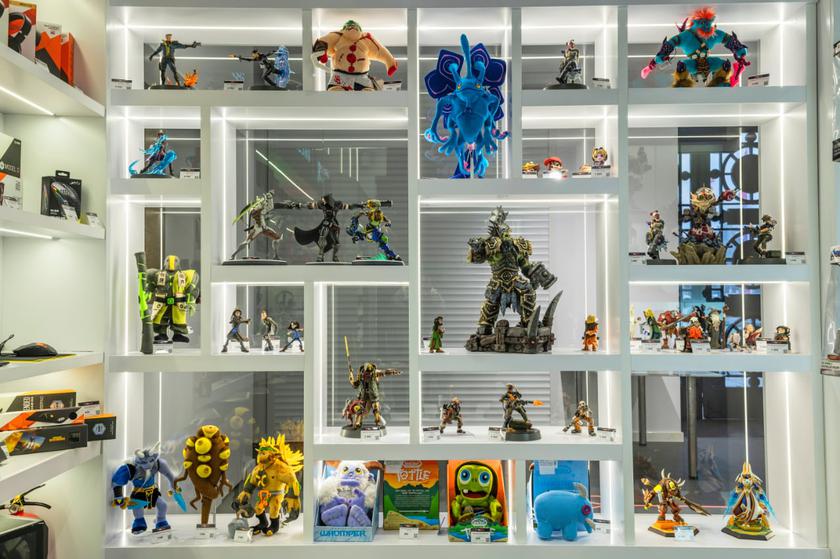
You can feel and purchase plush toys by WP Merchandise! in the FragStore shop at VDNG in Kyiv.
What happens to the products next? What part of them remains in Ukraine? How is this regulated by the contract?
About 2% of all products remain in Ukraine, the rest go to Europe and the USA. Further, through our partner’s distribution network the products are distributed through online and offline stores in the territories stated in the contract. In contracts with copyright holders, the period for the sale of products is also declared - on average, it is 2 years, after which all products must be sold.
We can also talk about distribution in general. TECHIIA includes FS Holding, which sells merchandise, sewn at the WP Merchandise! Kyiv factory, as well as created by colleagues from other countries. For the goods that we want to import to Ukraine or to another territory, the same requirements for quality and approvals are put forward, the same as for our toys. We study if there is any official permission for a particular company to have the right to supply this particular product group to us, FS Holding, for further distribution on the territory of Ukraine.
Here is an example. One company wanted to bring some Disney universe merchandise to the Ukrainian market. It is produced by the Beast Kingdom, the partner of the American copyright holder, just like we are. But it turned out that they are not allowed. Our colleagues must have official permission from Disney to supply this particular product to our territory through our company. That is, the agreement between us, the market players, is not enough - we must obtain the consent of the copyright holder.
Distribution is also a kind of production, only everything is a little bit simpler.
By default, we, as FS Holding, have the right to import everything that is on the market into Ukraine. This does not contradict the one mentioned in the previous paragraph: our potential partner must either already have the right to work on our territory, or "enter the region" from a legal perspective.
There are licenses of the World Wide category, they allow you to sell everywhere. But it is often appropriate to single out specific regions for a specific product. Just like licensors, we focus on demand, therefore, based on an understanding of our region, we create merchandise that our current and potential customers will love.
Original article on
